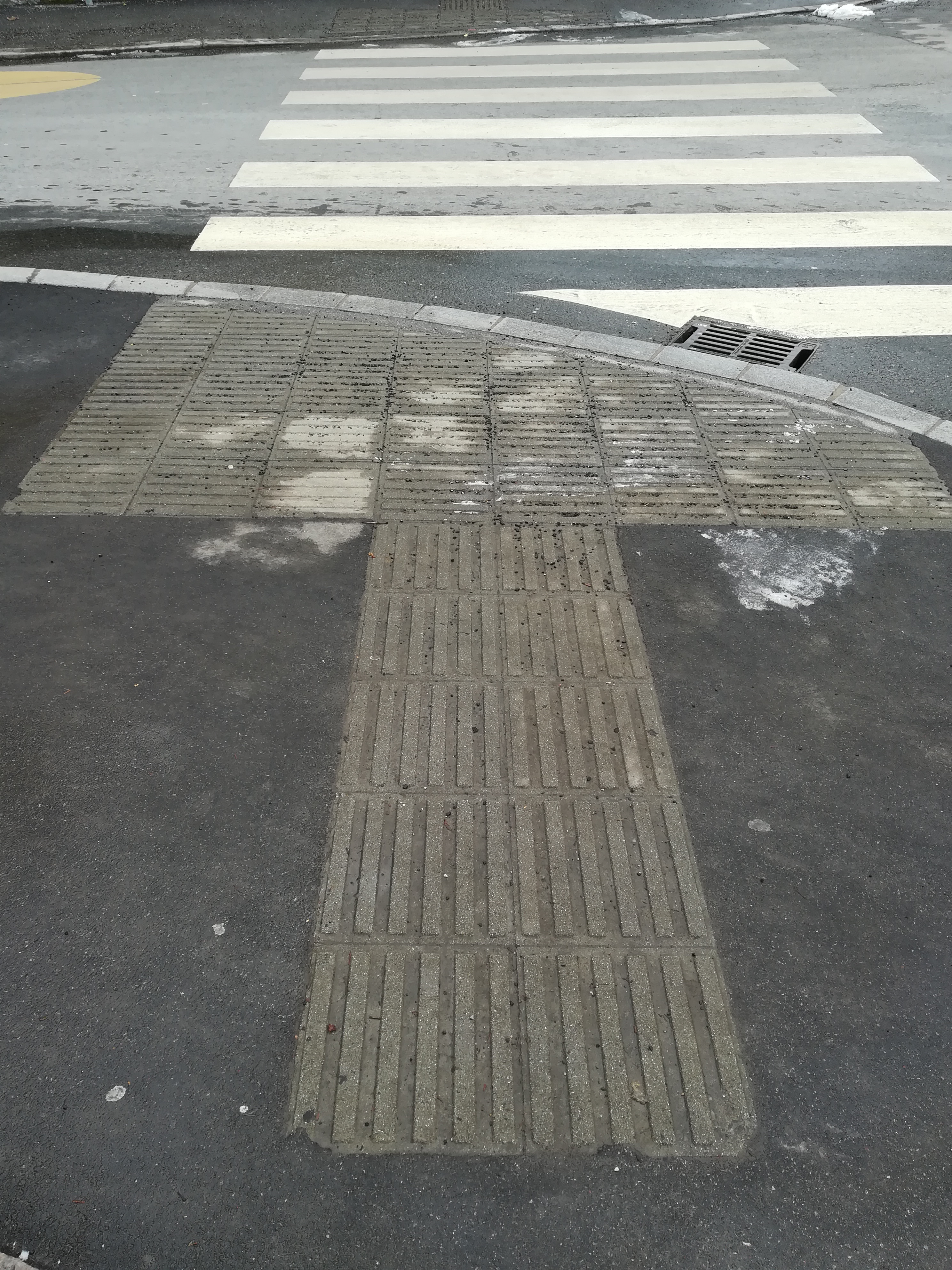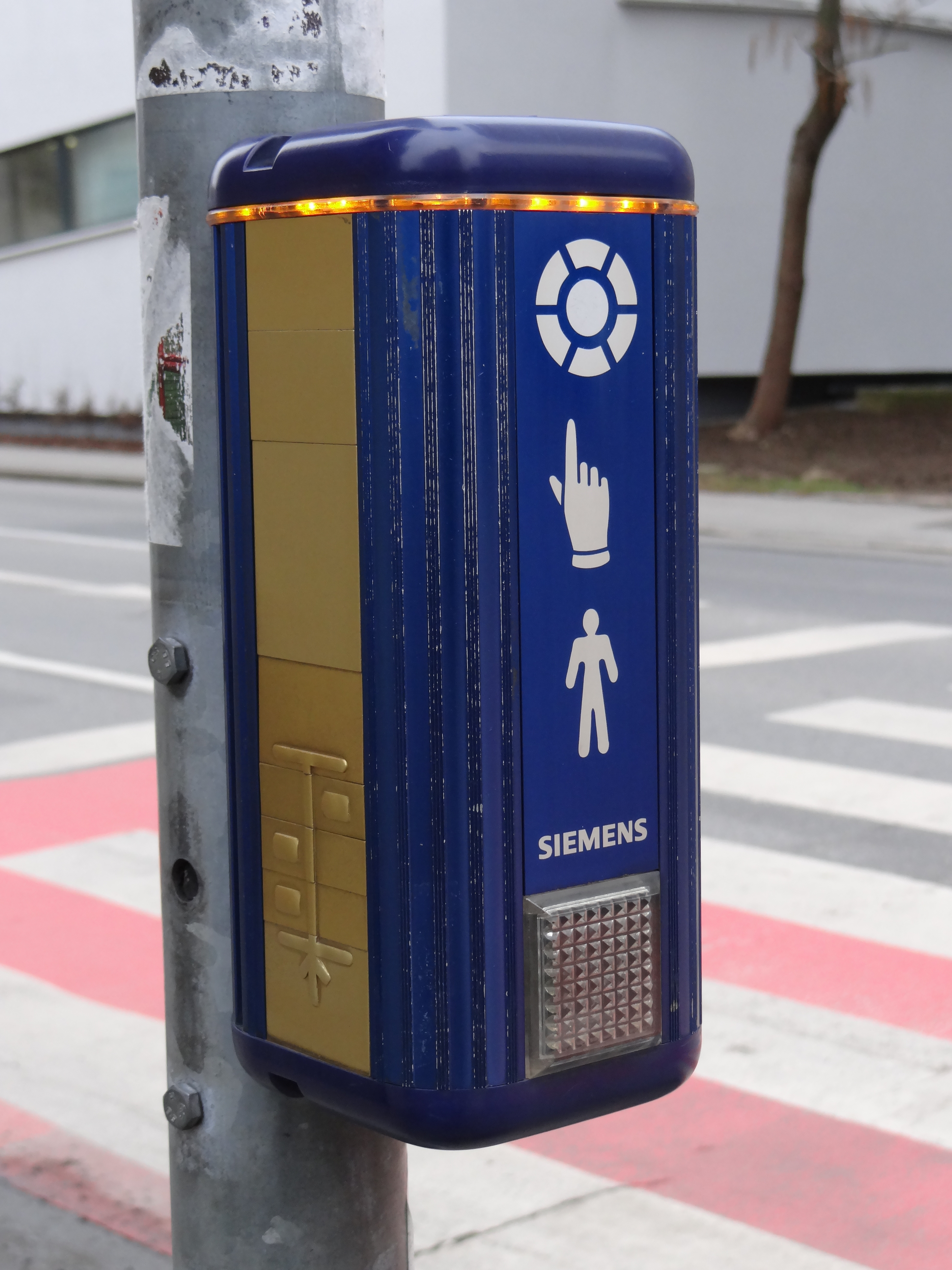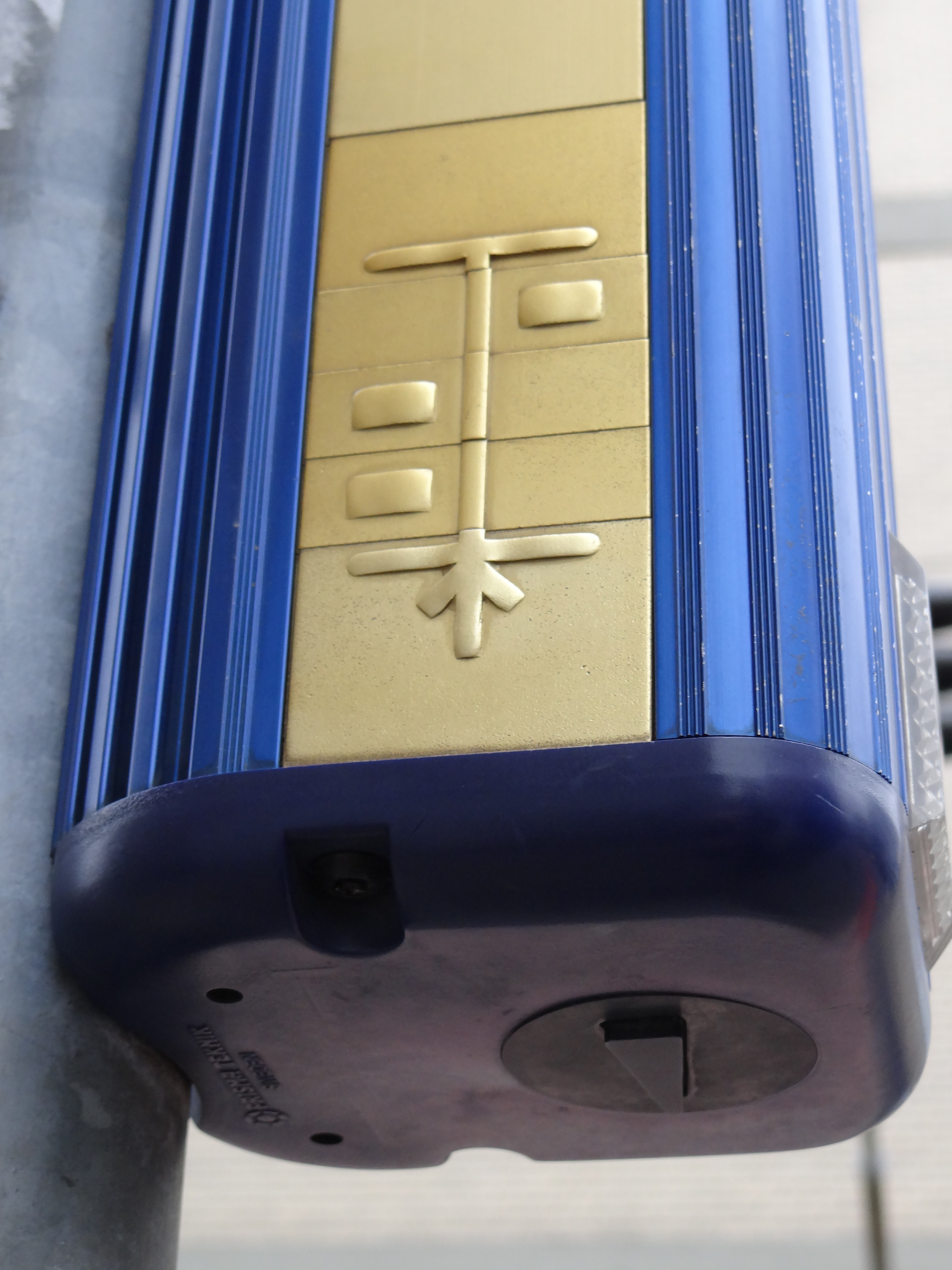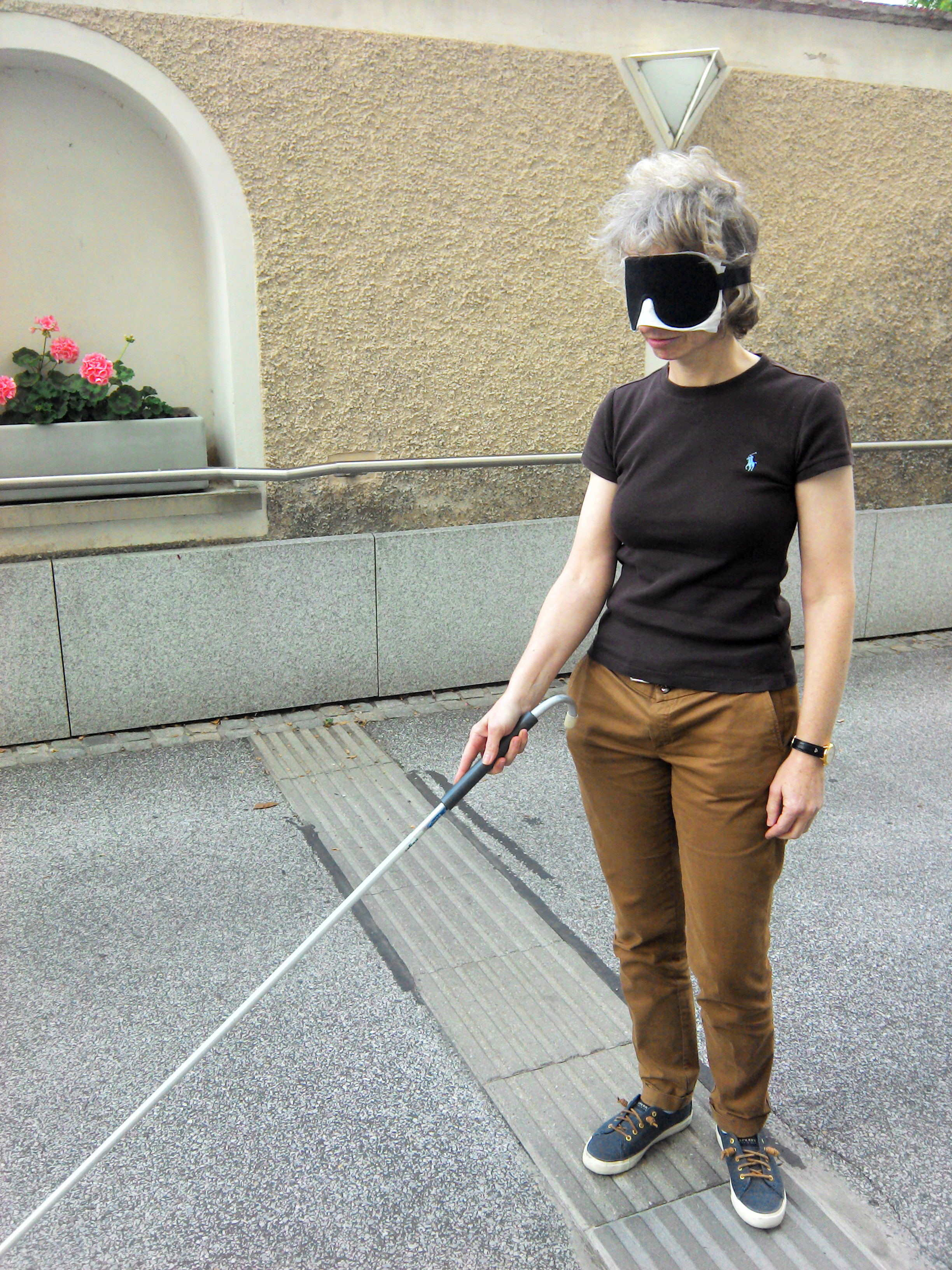Worth to know - What you always wanted to know about the topic of visual impairment or blindness
Some basics in interacting with people with visual impairment or blindness
Many people never or just barely have contact with people with visual impairment or blindness or, generally speaking, with people with differences. Therefore, a fear of contact is understandable. In order to reduce potential fears and barriers, the following lines, written by Thomas Matthä, provide useful hints. Based on Thomas’s personal experiences in dealing with sighted people, and the many experiences of friends and relatives, this section is a summary of the most common mistakes and errors.
Preface
It is often hard to address people with differences because of having no experience and not knowing how to approach them. In which way do you address this person? How are you able to help? The fundamental rule is, simply ask! It is best to ask how you can assist. E.g., there have been instances when I was guided across the street although I did not want to cross the street. Once, I was even helped into a streetcar although I did not yet know which line to take. Another time, a friend of mine was sitting in the streetcar line number 7, direction St. Leonhard, when she was suddenly pulled on her arm. She thought, somebody would like to sit down and she should get up. However, the mindful person assumed that she needs to get off at the Odilien-Institute, arguing that “all blind people are going to this Institute“. My friend explained that she wants to go to the final stop.
Consequently, the golden rule is: Help is superb and welcome, but please ask if and how you can help! Please do not be angry if your help is not needed at this point and the person can handle the situation on her/his own. Please do not feel discouraged or frustrated!
Location statements
In case you are explaining directions please do not simply say „over there“, „in front of you“, „back there“ etc. It is way better to use exact descriptions, either with the geographic direction or with the clock face. In addition, pointing in a certain direction with your finger is not useful for people with visual impairment or blindness, as they cannot see where you are pointing. When you are out with a person with visual impairment or blindness, sitting in a restaurant for instance, please tell your companion whenever you are leaving your seat. Otherwise, he/she is probably talking with an empty seat.
Correct guidance
The guided person is linking arms with the guiding person. Please do not push persons with visual impairment or blindness right in front of you! In such a case, I personally have the feeling that I am the guiding person. When approaching a narrow spot, please indicate the situation and turn your arm on your back – the guided person knows that she/he needs to walk behind you. Please always indicate stairways and platforms. When going through doors, do not push the person in front of you, please go ahead and tell her/him that you are passing a door. Do not be irritated if a blind person is guiding another blind person. Mostly it is the case, that one person is already knowing the area very well and is therefore guiding a person which is not street-smart yet.
Persons with visual impairment or blindness are not underage
It is a pity, but there have been numerous cases in which my assisting person was addressed in the following way: „What does he want?“ or „Do you think that this is the right thing for him?“. A person with visual impairment or blindness, like any other person, is able to understand and to speak! It is not necessary to speak slower, louder or more articulated.
Well-meant Goodies
Yes, I really enjoy some sweets or a piece of chocolate occasionally, but please do not put anything in my mouth without asking me! I would like to know what I get and I would like to have a fair chance of gratefully rejecting. Some months ago, I had something sticking on my nose. My caring, nice colleague immediately wanted to assist me, approached me and said „Thomas don‘t move“. Following, she greased something disgustingly smelling on my nose, which I had to remove immediately. Her help was well-intended but I would have wished for clarification ahead; simply to know what is going on. What matters is: please always ask and inform!
Reading mails and documents to someone
From time to time, I have to ask sighted persons to read something to me. In many cases I experience, that the text is abridged, because the reader is already making a preselection of what could be of interest to me. I therefore only get a summary of the content. In one case, a person was unable to cope with this situation and asked me to choose somebody else to read the text. The reason was not an inability to read, but the person herself did not understand the content and thus thought that the content would also overrate me.
Visit people with visual impairment or blindness
Before my guests are leaving, I always ask them to put their tableware, bottles etc. in my sink. Otherwise there is the danger that I shatter something when I am cleaning the table. If you are visiting a completely blind person, it is important, before you are leaving the apartment, to inform the person that the lights are still on.
Windows and doors
Please always advise people with visual impairment or blindness if windows and doors are open. Semi-open doors can be extremely painful! A blind friend of mine commented the crash with the edge of a door as follows: „That’s how it must be to see stars in the sky.” A humorous way of coping with such a painful situation..
On the way in the city
Tactile guiding lines and the Graz T
I am sure that you already walked, consciously or unconsciously, along grooved floor plates in Graz. Probably you also recognized the T-shaped floor tiles at intersections. Presumably you have already yourself asked what they are used for.
On public spaces in the city of Graz, such as the main square, the train station etc., you will find guiding lines, or a tactile sidewalk guiding system to be more precise, which are used for orientation with the white cane. Additionally, at intersections burled T-shaped tactile systems indicate crosswalks and support orientation. In order to prevent stepping on the roadway by mistake, people with visual impairment or blindness orient themselves along the edge of sidewalks. When feeling with the white cane that the sidewalk is lowering, you know that you are approaching an intersection. To notice the edge with the white cane, the height of the edge needs to be at least three centimeters. Those three centimeters, though, can form an insuperable barrier for wheelchair users. Therefore, the city of Graz developed the so-called Graz-T to reduce the conflicts of interest between people with visual impairment or blindness and wheelchair users. The T consists of groove shaped floor plates, 80 x 80 cm, with the cross piece being 80 x 280 cm. The distance of the cross piece to the roadway must be at least 30 cm.
Tactile guiding lines are leading mostly to public institutions, where you will often find groove plates transverse to guiding lines which indicate the entrance. Another example are bus or streetcar stations. For an easier access of the front door, the entrance area is marked by grooved floor plates, the so-called burling field. The bus drivers are advised to stop exactly at this indicator panel.
Although, these tactile guiding lines are extremely helpful to support the orientation of people with visual impairment or blindness, there is also a downside to them. In winter, for example, it can be extremely difficult to recognize the grooved tiles when the pavement is icy and therefore covered with distributed sand or gravel or even worse, when it is covered with snow.
Additionally, people sometimes park their bikes on those guiding lines and tiles. Hence, a request to all cyclists; please keep the guiding lines free of bike. It is in the best interest of all if bikes do not fall over as the result of an unintentional collision.
I personally like to use the Graz T to avoid stepping on the roadway. However, I try not to rely completely on tactile guidelines and therefore remember other important reference points, like buildings, fences, entrances etc., in case that the guiding lines are not recognizable anymore.
Source: anderssehen.at, 2017
What do the arrows mean on accessible pedestrian lights?
In contrast to tactile guiding lines, many people already know what the „ticking boxes“, fixed to traffic light poles, are used for. They support the orientation of people with visual impairment or blindness with an acoustic signal. Most of the traffic lights in the city of Graz are equipped with an acoustic signal, which is beeping faster on green. However, if there is heavy traffic, it is hard to detect the sound. Therefore, some of the boxes vibrate and enable you to identify by hand whether the signal is green or red. Still, did you ever recognize the arrows on accessible pedestrian signals? They indicate the walking direction across the street for people with visual impairment or blindness. Some of the accessible pedestrian signals additionally show a relief, giving further information about the intersection, indicating whether there are e.g. streetcar tracks or traffic refuge.
Bicycles on tactile guiding lines
Since 2017, the city of Graz tries to prevent the parking of vehicles on tactile guiding lines as those lines constitute an essential orientation aid for people with visual impairment or blindness. With the new regulation, bicycles can be towed away and the owner can be fined. Everybody is therefore requested to care for a proper parking of their vehicles. This is not only important for reasons of orientation, but also as the blocking of guiding lines by vehicles can be extremely dangerous. Occasionally, people with blindness fall over bicycles or get caught on pedals and get severely hurt. In addition, damages can occur when a person accidentally knocks over a bicycle with a white cane. Therefore a big request to all cyclists: please use bike racks, because bicycles as barriers are even harder to recognize than parked cars and are thus causing extreme risks of injury.
Source: meinbezirk.at, 2017
White cane safety day
In 1969, the United Nations declared October 15 as the “day of the white cane”. The white cane is not only important for the orientation of people with visual impairment or blindness, it is moreover important for the safety and as a recognition symbol for other road users. § 3 of the traffic regulations is appealing to the fact that each road user is acting accordingly to the traffic rules. However, this principle of reliance does not apply to those people who are challenged in traffic situations. This includes children, but also people with visual impairment or blindness, as they are mostly unable to judge traffic situations correctly. Especially blind people are not able to capture all situations with the white cane.
In addition to the white cane, the yellow armlet is used as a distinctive feature for people with visual impairment or blindness. On October 15, 1964, US Pres. Lyndon B. Johnson, in a symbolic act, distributed white canes to people with visual impairment or blindness – this date is officially the beginning of systematic orientation and mobility trainings. In former times, the canes were as short as walking sticks because many blind people were of older age and used them additionally as walking aid. Of course, this caused problems, the sticks were not sufficient for forward-looking orientation. With today’s long canes, you are always one or two steps ahead in order to avoid possible collisions or crashes. For the proper use of the white cane, it is important to attend special orientation and mobility trainings.
Why is the cane white?
Already in 1930, an idea was developed in Paris to provide blind people with the white cane as a protection and identification symbol; due to the excellent visibility of the white color. In February 1931, Guilly d’Herbemont, the creator of the idea, was distributing the first white canes, under the patronage of ministries and organizations for the blind. This was the official recognition of the white cane as protection and identification symbol. In addition to the color, today’s white canes are equipped with reflectors to increase the visibility.
Braille
In 1825, the blind Frenchman Louis Braille developed a lettering system, named after him as Braille. The lettering consists of dot patterns, printed on the paper from the backside. An embossment, which can be felt, is created on the right side of the paper. Classic Braille (literature Braille) consists of six dots, three in a vertical and two in a horizontal order. Vertically you will find the dots 1, 2 and 3, horizontally the dots 4, 5 and 6. This results in 64 combinations, including the blanks. Later on the dot 7 (left below) and the dot 8 (right below) was added, resulting in 256 possibilities. This is extremely important for the use of computers, therefore this extension is called computer Braille. If you are just using literature Braille, you need to add leading signs to deal with, e.g. mathematical symbols or a @-symbol. In addition, if you are using capital letters you need to announce them with the dots 4 and 6. For numbers you are using letters (e.g. 1 = a, 3 = c, 0 = j), they need to be announced additionally with the dots 4, 5, 6. If you are using computer Braille you simply add dot 7 for a capital letter and dot 8 for numbers.
Writing and reading with Braille
In former times, Braille was written with embossing machines. One had to press single letter buttons together; e.g. in order to write the letter b you had to press the buttons 1 and 2, for the letter m you had to press the button 1, 3 and 4. In case you were on the road, a pointed item, a graver, was punched into a piece of paper.
On computers, Braille lines enable blind people to read. They are used in different lengths. The most common lengths are 40 or 80 characters. For smart phones shorter variations are available, but there are also apps available, e.g. memos, watches, calculator, etc. Special Braille-printers are used to print documents.
Braille on packaging of medical products
A couple of years ago – probably in 2007 – somebody, whom I have only shortly known, visited me. When I tried to explain him what Braille is, he said: “Finally, I know what the dots mean on medication packages. When I saw them for the first time, I asked myself, why somebody punched dots into the box.”
This “Somebody“ has been really busy, because since 2006 an EU-regulation has been indicating that all medicine packages have to carry a description in Braille. Unfortunately, information about the expiration date or the indication of the medicine are voluntary and mostly scarce or simply not available. Therefore, people with visual impairment or blindness are still depending on assisting persons or other assisting devices. On other packages, like tea, beauty products etc. you will barely find Braille descriptions.
Elevators offer Braille descriptions more frequently. However, if an elevator is lacking a voice announcement, it is hard to know in which floor you currently are. Therefore it would be helpful to have both, Braille and voice announcement. Finally, a rather negative example: in the building where my parents were living, the elevator was far from being barrier free. There was a Braille description, but the elevator had a touchscreen and immediately after contact with the touchscreen, the elevator went off. There was no voice announcement and you never knew where you are, except you touched the right dot by chance. Also for sighted people, the elevator was unhandy, as touching the screen with your coat, for example, would bring you to any floor.
Source: Pharmazeutische Zeitung online, 2017
Why do we find 3-D models in the city?
Did you ever notice the 3-D models in the city of Graz, for example the 3-D model of the Schlossberg right in front of the clock tower?
The question is why are they there? Are they only for decoration? Do they just look nice or is there a deeper meaning to them?
As you might have guessed, there is a deeper meaning. In general, people with blindness and partly also people with visual impairment are not able to view photos or to see maps. A building, for example the City Hall, or bigger objects cannot be touched and perceived as a whole. Therefore, 3-D models are a good option to get a better idea of how a building looks like. There are four 3-D models in Graz:
- Kunsthaus: it is located in front of the second entrance at the riverside
- City Hall: located in the entrance hall, close to the concierge
- Schlossberg: this model is located right in front of the clock tower
- Opera House: the 3-D model is located at the entrance facing the Opernring.
There was an additional model showing the Murinsel, but it was destroyed by vandalism. If you take time to have a look at the models, try to touch them with closed eyes. You will recognize for yourself which distinctive details and features you can feel. Have fun!
The alphabet
With the letter k, it starts again with the letter a, and dot 3 is added:
With the letter u, it gets irregular:
Some punctation marks:
Possibilities for voice output
Since a couple of years, voice output applications, so called screen readers, are offered by software companies to improve the use of computers by people with visual impairment or blindness. Windows is using the commercial screen reader JAWS (fee required), developed by Freedom Scientific. Mac OS X is offering the software VoiceOver, which is available on Apple hardware free of charge. The screen reader is able to provide the content of the monitor/display in speech (auditory) and/or in a Braille line (tactile). Screen readers are using at synthetic speech, the sound is usually very electronic sounding. Most of the screen readers are having a dictionary; there is also the possibility to correct/improve a screen reader by adding words. A speech software is also able to describe menus, buttons or other digital elements. Even webpages are accessible, whenever elements like headings, hyperlinks etc. are properly labeled.
There are different software provider for voice output programs – here is a small selection:
- Job Access With Speech (JAWS)
- Window Eyes
- Blindows
- Cobra
- HAL
- Non Visual Desktop Access (NVDA)
- Orca (Screen reader for Gnome)
- VoiceOver (Screen reader by Apple)
For those who are interested in more details, a brief description of JAWS and VoiceOver is provided in the following lines:
JAWS by Freedom Scientific
JAWS (Job Access With Speech) was developed for Windows by Freedom Scientific in 1993. Henter-Joyce Inc. produced the basic development of JAWS for the operating system MS-DOS in 1989. Available versions are for 32 Bit and 64 Bit. The voice system „Eloquence“ is able to transfer the monitor information into an acoustic output signal. Additionally, a tactile line is displaying information in Braille. JAWS is a proprietary software (there is a demo version available but it only useable for a maximum of 40 minutes, after this you need to restart the computer). JAWS is useable for all common applications and software, whenever necessary, special add-ons are available. You can also use scripts to enlarge the accessibility for most of the programs. Since a couple of years ago, most webpages on the Internet have become increasingly accessible with JAWS, in case the operating/control elements have been and still will be properly designed by the publisher of the website. By using different shortcuts, you can also access different elements like headings, links, tables, frames etc.; it is also possible to open elements in a list by using cursor keys. JAWS is an official auxiliary device for people with visual impairment or blindness; therefore, it is possible to apply for refund when buying the comparably expensive software – at least in German-speaking countries.
VoiceOver by Apple
The Apple Operating System (OS) is delivering a screen reader since Mac-OS-X version 10.4. The voice output is an integrative part of the operating system. Therefore, VoiceOver is the most common software for Apple products. Since March 2009, VoiceOver has been offered offered for the iPod Shuffle. Subsequently, VoiceOver was made available for iPod Touch, iPhone and iPad. Consequently, VoiceOver can be used on all Apple devices (including Apple TV). This makes Apple devices highly accessible for people with visual impairment or blindness. There is also the possibility to define and use own gestures for Apple Touchscreen devices. On Apple computers, you are using VoiceOver with hotkeys/shortcuts. Compared to other screen readers the voice is „comparably human“. Of course, you will also find language mistakes, but the user is able to adjust them with a dictionary, just like in most other screen readers. Since Lion (Mac-OS-X, version 10.7), the voice output in German is available.
Apple is using a different handling, compared to the voice outputs used by Windows. Windows is using the vertical operating unit, while Apple is offering a horizontal one. Using VoiceOver means using two buttons at the same time: a control button (CTRL) and an options button (ALT). When navigating in a program or on a webpage you need to press the two VoiceOver buttons and the right arrow key. VoiceOver is also dividing the screen into different areas. Consequently, people with visual impairment or blindness are able to interact between areas, and e.g. the button bar. The main advantage is that you stay in the selected area and you do not accidentally leave the area you are working on, e.g. when working with tables. .




